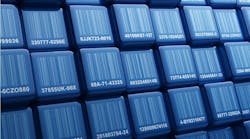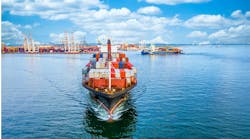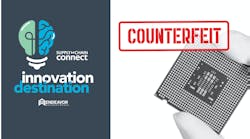Download this article in PDF format.
Defined as packaging that includes features or technologies that thwart copying, tampering with and/or diverting of products by unauthorized parties, anti-counterfeit packaging helps manufacturers preserve their brand reputations, combat piracy and thwart intellectual property theft. As technology has advanced, anti-counterfeit packaging has become even more sophisticated, smarter and better at helping companies reduce revenue losses associated with counterfeiting.
For example, Express Computer says the use of “invisible signatures” is one of several new innovative anti-counterfeit packaging innovations. “These smart packages facilitate direct interaction with consumers through smartphones, providing real-time authentication and detailed product information,” it says. “With a simple scan, consumers can verify the authenticity of their purchases, fostering trust and loyalty.”
Top Targets
The list of “most counterfeited products” in the U.S. includes (but isn’t limited to) consumer electronics and parts; medicines and personal care products; computers and accessories; labels and tags; and optical media like games, CDs and DVDs.
For these and other product categories, anti-counterfeiting features on packages may be visible, hidden or forensic, depending on the level of security and verification required. Common examples of anti-counterfeit packaging include holograms, RFID tags, tamper-evident seals, QR codes and microprinting (a technique that uses tiny text, images or patterns that are difficult to discern with the naked eye).
Pharma’s Counterfeit Woes
Pharmaceutical manufacturers are major users of anti-counterfeit packaging, and for obvious reasons. Not only can counterfeiters chip away at the “real” manufacturer’s revenues by producing counterfeit versions of their products, but those illegal therapies and drugs can be downright dangerous for consumers.
“Counterfeit medicines pose various threats and result in a significant loss of money for big pharma every year,” Origin Pharma Packaging states. “And the threat shows no signs of slowing, with the global counterfeit drugs market believed to be worth up to $432 billion.”
Origin says the biggest challenge in anti-counterfeiting is that there are simply so many counterfeit medicines on the market. For example, the World Health Organization (WHO) says 1 million people die each year from taking fake or substandard medicines.
Thanks to the growth in e-commerce, it’s easier than ever for someone to sell counterfeit medicine over the internet while posing as a legitimate pharmaceutical business.
“Patients are looking for convenience – they don’t want to visit their doctor, go through the steps to get a prescription and then head to the local pharmacy,” Origin points out. “This is why they turn to the internet marketplace – and with so many criminals out there distributing fake drugs online, it’s difficult for anti-counterfeiting measures to keep up with them.”
Double-Digit Growth Ahead
The anti-counterfeit packaging market is in growth mode right now and expected to post a compound annual growth rate of 16.3% over the next 10 years, Evolve Business Intelligence reports. Its current value is just over $150 billion.
Some of the top market drivers include increased supply chain complexity and the need to ensure the authenticity of products as they move through those critical networks. “The prevalence of counterfeit goods has been on the rise across various industries, including pharmaceuticals, electronics, luxury goods and consumer goods,” Evolve points out. “This has led to a greater demand for robust anti-counterfeit solutions.”
Governments and regulatory bodies are increasingly implementing strict regulations and standards to combat counterfeiting. In response, companies are adopting more anti-counterfeit measures to both stay in compliance and to protect consumers.
“Growing awareness among consumers about the risks associated with counterfeit products has led to an increased demand for products with enhanced security features,” said Evolve. “Consumers are more conscious about the authenticity and safety of the products they purchase.”








